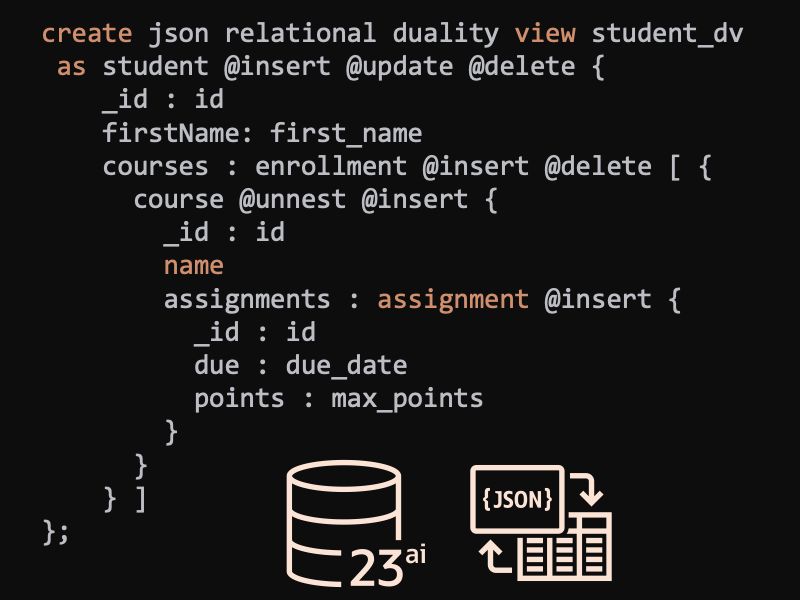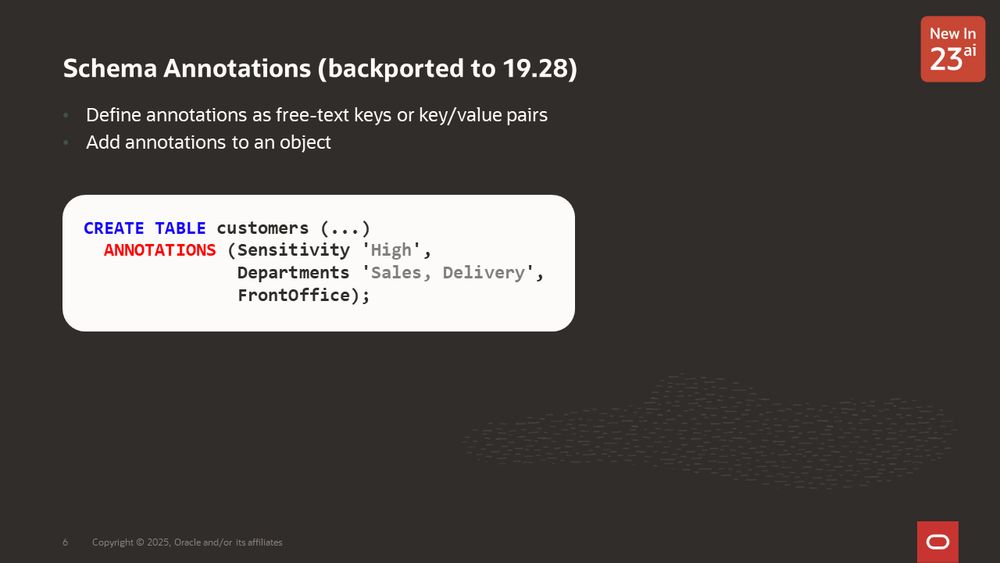SQLDaily
@sqldaily.bsky.social
300 followers
3 following
210 posts
Daily Oracle SQL tips from the Oracle Developer Advocates for SQL
Posts
Media
Videos
Starter Packs






![JSON enhancements
JSON data type: a new data type for binary JSON representation making JSON reads & writes faster
Multi-value index for JSON enables fast searches within JSON arrays
Example:
CREATE TABLE json_data ( data JSON );
CREATE MULTIVALUE INDEX j_array_i ON json_data j ( j.data.arr.number() );
INSERT INTO json_data VALUES ( JSON ( '{ arr : [1,2,3] }' ) );
SELECT * FROM json_data j
WHERE JSON_EXISTS ( j.data, '$.arr?(@.number() == 1)' );
---------------------------------------------------------
| Id | Operation | Name |
---------------------------------------------------------
| 0 | SELECT STATEMENT | |
| 1 | TABLE ACCESS BY INDEX ROWID BATCHED| JSON_DATA |
| 2 | INDEX RANGE SCAN (MULTI VALUE) | J_ARRAY_I |
---------------------------------------------------------](https://cdn.bsky.app/img/feed_thumbnail/plain/did:plc:blmnab373idbogizdn742doc/bafkreicgpkd75k3hddqwcg5yayhtxbyaa2moikgcpzhdr4jzynlwq6sv7e@jpeg)
















